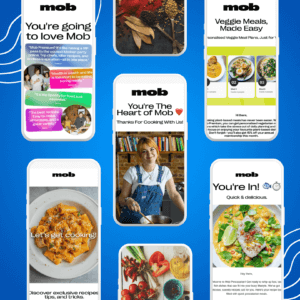The term Validation Marketing was first coined in 2017 by our founder, Rishabh Dev. In this article, we will explain the fundamentals and the process of validation marketing.
While we’re a growth marketing company, we have a lot of inquiries coming in from early-stage startups who may or may not be “growth ready”. This includes startups who’re trying to figure out their product-market fit.
In most cases, we would explain to startups how growth hacking begins once they’ve found their product-market kit and provide them with frameworks and tools to help them find their audience fit faster.
Rishabh came up with the concept of Validation Marketing so we could have a process in place to help these early-stage startups with a step-by-step method that would work for them and not just mentor the words “Go find your product-market fit” as if it was something hiding somewhere to be found.
We’d like to point here before we proceed, that the term Validation Marketing should not be confused with Market Validation as it is a marketing process and not just a validation framework. In fact, it’s not even limited to finding a product-market fit. It can be used to find the right title of a book or the name of a course or the right audience for your blog or even the name of your startup. Let’s understand more about that in the detailed description that follows.
Validation is key to any new idea. We need to solve the “validation” problem but why not do it using marketing rather than just research? The next question is What’s the equivalent of full-blown marketing campaigns for validation?
Enter Validation Marketing.

The Problem Statement
There is a lack of process-oriented marketing methodologies during the validation phase. While marketing campaigns need high budgets, growth hacking usually comes in only once the startup has a product-market fit.
Growth Marketing solves the time and budget problem but entrepreneurs and marketers still don’t have the right approach, toolset, and skillset to validate.
The Solution
Principles of Validation Marketing
- It relies on lean marketing strategies to test and validate an idea or product.
- Validation Marketing works well with the concepts of a lean startup to validate ideas, messaging, features, and product design.
- Validation Advertising, a part of Validation Marketing, involves setting up low-budget micro-targeted tests on digital ads to validate a specific marketing hypothesis.
- Growth Marketing happens after you find a product-market fit. Validation Marketing is what helps you find the product-market fit.
- It can also be used to find the best performing growth hacks for your startup or business.
- Validation Marketing results are an important input to future Inbound marketing campaigns too.
- It can be used as a tool to refine your digital marketing strategy.
- Validation Marketing is a tool to help market research and market validation.
- It deploys A/B testing for validating results and campaigns.

Now, let’s see a few examples where validation marketing can be used. These examples are not just from startups, but any size of business.
Applications of Validation Marketing
Validation Marketing can be used for the following:
- Finding the right market for your product or service
- Finding the right features to build for your product
- Finding the right target audience for your product
- Finding the right title for a book
- Finding the right headline for a blog
- Finding the right content buckets for your marketing calendar
- Finding the right audience for your blog
- Finding the right messaging for your campaigns
- Finding the right brand messaging
- Finding the right brand colors, logos, and other collateral
In fact, Validation Marketing can be used to validate growth marketing experiments at any of the stages of the A3R3 funnel.
The Validation Marketing Step-by-Step Process (Explained with Examples)
EXAMPLE 1: Using Validation Marketing to Decide If You Should Build the MVP or Not
This is a classic startup situation. You build an MVP and get feedback from the market. You go agile – build, get feedback, and change until you’re ready with something to ship to the universe. So here’s a step-by-step guide on how to use validation advertising to validate your startup idea.
The core idea here is – Instead of building an MVP, just showcase an MVP.
- Step 1: Make a landing page showcasing all the features of your MVP and treat this landing page as your pre-MVP.
- Step 2: Run validation advertising campaigns on this landing page (say $10 per the potential target audience set) and decide 3 likely audiences for the experiment.
- Step 3: Include an early-bird offer on each landing page and track the percentage conversions to the early-bird email captures.
- Step 4: Pick the target audience with the highest conversion rate and ask them to pay a small amount to confirm their early-bird offer while showing them some designed screenshots of the future product.
- Step 5: Use the data to actually decide if you will build the actual MVP or not. If the data is below your expectations, refund the early-bird amounts.
For one of our clients, we decided to hit a 20% email to payment conversion and if we hit 20% we would develop the product MVP else we would refund and plan a revised product. You have to choose your own % conversion rate based on your product or service.
EXAMPLE 2: Using Validation Marketing for Blogging & Landing Page Offers
Here’s an actionable way you can use it for blogging:
- Step 1: Create 3–4 blogs to A/B test using Validation Advertising.
- Step 2: Run small budgets (say $10 per blog) and run ads on these blogs while tracking the data.
- Step 3: Once you have the data of which blog performed well, set up a landing page with offerings based on the problem statement addressed on the blog.
- Step 4: Run ads on the new landing page to the traffic tracked by the pixel. You can also use email remarketing at this stage.
As you might notice, this is one of the best ways to reduce ad costs – by using validation marketing in combination with remarketing.
EXAMPLE 3: Using Validation Marketing to Decide Which Content Needs to be Promoted Using Ads
- Step 1: Instead of starting ads on your content which is doing well organically (which is the approach most startups and brands follow), start by validating the budgets with the target audience on multiple content buckets. For example, one validation set would be the combination of one content bucket + one content type.
- Step 2: Make all the possible combinations of content bucket & content type pairings and assign a small budget to each combination (even $10/day would be a good start)
- Step 3: Gather around 1-2 weeks of data on the best performing combination keeping the audience the same.
- Step 4: Use this to promote your content further and also to create the content and marketing calendar for the next 4-5 weeks.
We’ve seen amazing results when validation campaigns are guided by the principles of validation marketing and not just random interviews and questionnaires. There is no reason to limit it to startups as you would’ve seen in the use cases.
To make it easy to deploy Validation campaigns, we’re drafting the validation marketing process we’ve used with multiple startups and businesses.
If you’d like to work with us on validating your marketing ideas or get marketing consulting, write to us at rishabh@mapplinks.com.
To learn all about growth marketing, visit our academy here.
If you’d like to see my entire growth marketing process, please click here.




